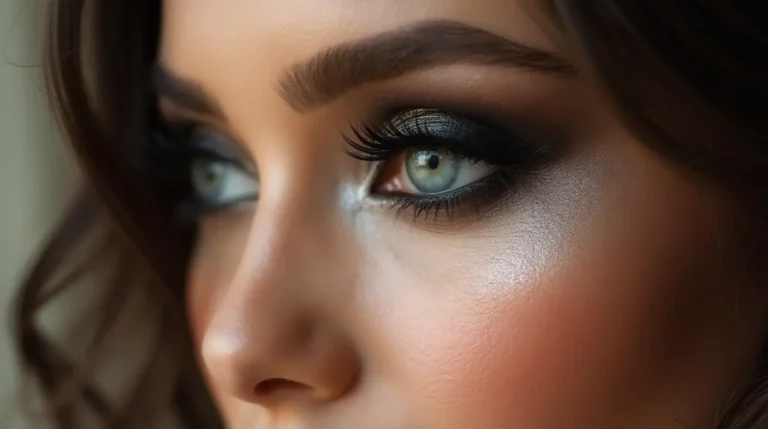Eyeshadow looks You’ll Love: 7 Chic Styles for All Eyes
Explore 7 chic Eyeshadow Looks styles with tips for every eye shape. Easy tutorials, makeup hacks & pro tips included.
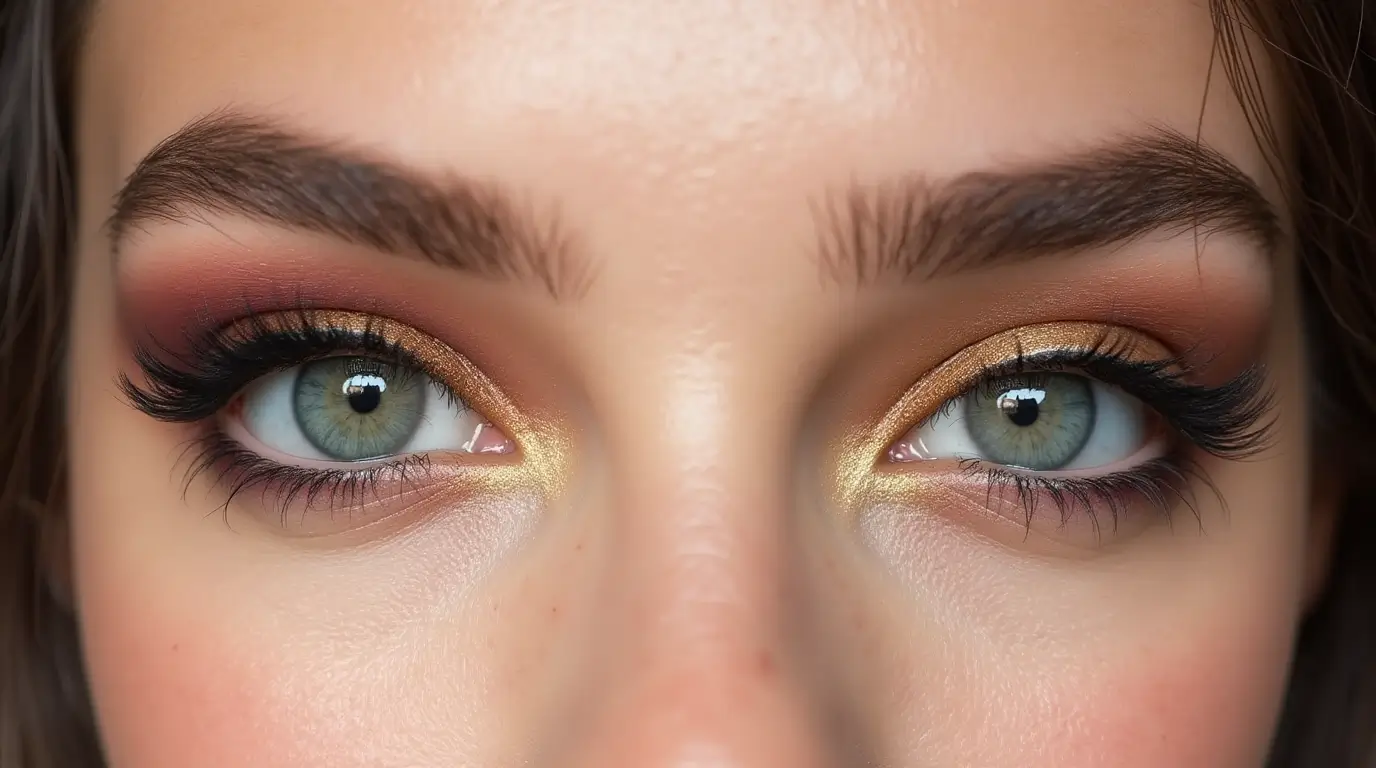
Table of Contents
Ever spent hours trying to perfect your eyeshadow look, only to feel like something’s missing? You’re not alone. Eyeshadow is more than just makeup—it’s a powerful form of self-expression that can transform not only your eyes but your entire look and mood.
Today, we’re exploring seven versatile eyeshadow looks that suit every eye shape and personality. Whether you’re drawn to subtle, natural vibes or bold, dramatic glam, there’s something here for you to love and make your own.
What Are Eyeshadow Looks?
Definition & Importance
Eyeshadow looks refer to specific color combinations, application techniques, and styles that create distinctive visual expressions around the eyes. They range from subtle daytime styles to dramatic evening statements, each telling a different story through color placement, intensity, and texture.
The right eyeshadow look doesn’t just enhance your eyes—it can complement your outfit, express your mood, or help you step into a different persona altogether.
Brief History or Trend Evolution
Eyeshadow has transformed dramatically through the decades. The 1960s brought us the iconic mod look with its graphic crease lines and pale lids. The 70s embraced bold, colorful styles, while the 80s went all-in on intense, often neon shades. The 90s pulled back with grunge-inspired smudgy looks, and the 2000s introduced us to frosted finishes.
Today’s eyeshadow looks have been revolutionized by social media, particularly Instagram and TikTok. Techniques once known only to professional makeup artists—like cut creases, halo eyes, and graphic liner—are now accessible to everyone through tutorials and trend-sharing. What used to take years of practice can now be learned through a quick video.
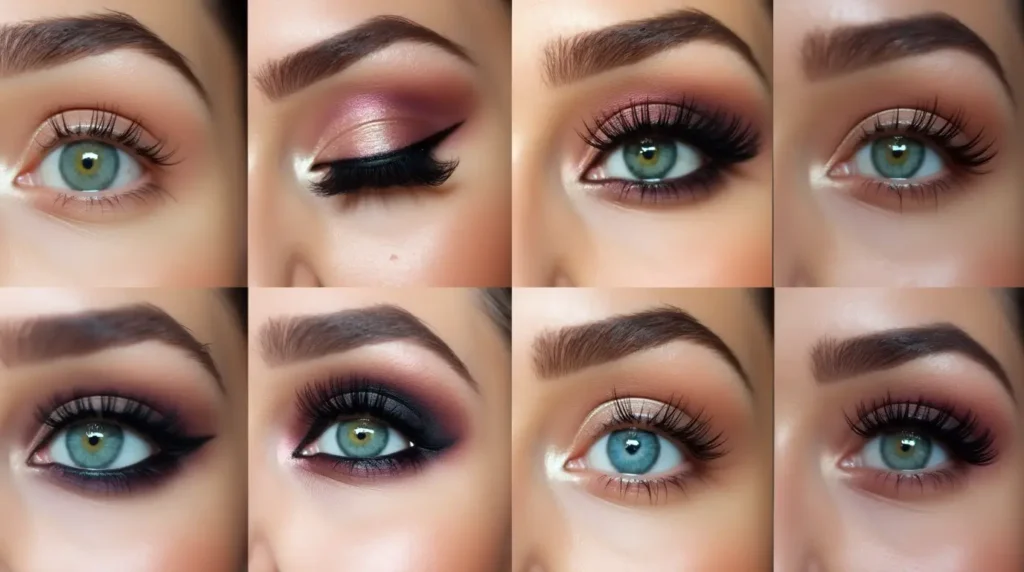
Why Eyeshadow Looks Matter in Makeup
Emotional & Visual Impact
Eyes are often called the “window to the soul,” and eyeshadow helps frame that window beautifully. The right eyeshadow can make eyes appear larger, more defined, or more awake. Beyond these visual effects, colors and finishes can evoke different moods—warm bronzes create a sultry effect, cool taupes offer sophistication, and vibrant blues or purples express creativity and playfulness.
Confidence Booster
“The day I learned to blend my eyeshadow properly was the day my confidence in makeup doubled,” shared celebrity makeup artist Jamie Greenberg. This sentiment echoes what many feel—mastering even one eyeshadow look can significantly boost self-assurance.
For many, applying eyeshadow is a mindful ritual that helps center thoughts before facing the day. It’s those few minutes of creative focus that can set a positive tone for everything that follows.
How Pros Use Eyeshadow Looks
Professional makeup artists approach eyeshadow as architects of dimension and light. They consider not just color but how shadow and highlight interact with a person’s unique eye shape.
Celebrity makeup artists like Pat McGrath and Mario Dedivanovic are known for customizing eyeshadow techniques based on their clients’ eye structure, skin tone, and the lighting conditions they’ll be under. For example, they might use deeper shades in the outer corners for hooded eyes to create the illusion of more lid space, or emphasize the lower lash line for downturned eyes to create balance.
7 Chic Eyeshadow Looks You’ll Love
1. Soft Nude Glam – The Everyday Hero
This versatile look works beautifully for office settings, casual brunches, or any time you want polished makeup that doesn’t scream “I tried hard!” (even if you did).
Tools you’ll need: A neutral palette with matte and subtle shimmer shades, and a fluffy blending brush.
How to create it: Apply a light matte shade all over the lid as a base. Add a slightly deeper neutral tone in the crease, blending thoroughly to avoid harsh lines. Optional: Add a touch of champagne shimmer to the center of the lid for dimension.
Pro tip: Blend, blend, blend! The magic of soft nude glam is in the seamless transition between shades.
2. Sultry Smokey Eye – Timeless Drama
Perfect for date nights, evening events, or whenever you want to feel especially alluring, this classic never goes out of style.
Tools you’ll need: A palette with charcoal or deep brown shades, black kohl pencil, and a dense smudge brush.
How to create it: Line your upper and lower lash line with kohl, then smudge it out. Layer dark matte shadow over the smudged liner, gradually building intensity. Add a touch of shimmer to the center of the lid to catch the light.
Pro tip: For a modern take, try a brown or navy smokey eye instead of traditional black—equally sultry but less harsh for everyday wear.
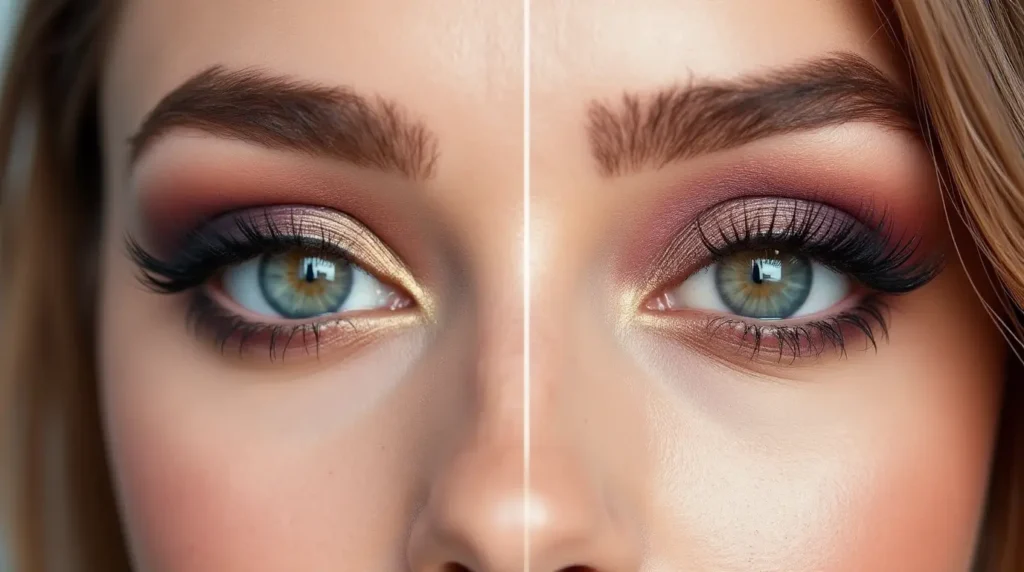
3. Monochrome Magic – One Color, Many Dimensions
This beginner-friendly approach uses just one color family in varying intensities for a cohesive, put-together look that’s nearly impossible to mess up.
Tools you’ll need: A single eyeshadow color you love, or a palette with various shades of the same hue.
How to create it: Apply the lightest version of your chosen color all over the lid. Use a medium intensity of the same shade in the crease. Finish with the darkest version along the lash line as a subtle liner.
Pro tip: Mauve, peach, and taupe are universally flattering monochrome options that work across skin tones.
4. Bold Color Pop – Unleash Your Inner Artist
When you’re feeling playful or attending a festival, concert, or creative event, this look lets you express yourself through vibrant color.
Tools you’ll need: Bright, pigmented shadows (matte or shimmer), a flat packing brush, and a good eyeshadow primer.
How to create it: Keep most of the eye neutral, then add a vibrant color to just one area—either the center of the lid, the inner corner, or along the lower lash line. The contrast between neutral and bright creates an eye-catching effect.
Pro tip: Use a white cream base under your bright shadow to make the color appear more vivid.
5. Halo Eye – Bright & Dimensional
This technique creates the illusion of depth and light, making eyes appear rounder and more open.
Tools you’ll need: Three complementary shades (dark, medium, and light/shimmer), and both fluffy and precise brushes.
How to create it: Apply the darkest shade to the inner and outer corners of the lid. Place your lightest shade or shimmer in the center of the lid. Blend where the colors meet for a seamless transition.
Pro tip: This look works for all eye shapes but is especially flattering for almond and hooded eyes as it creates the illusion of depth.
6. Cut Crease – Precision & Drama
A more advanced technique that defines the crease line sharply, creating dramatic contrast between lid and crease.
Tools you’ll need: Concealer, small flat brush, variety of shadow shades, and a setting powder.
How to create it: Apply and blend a transition shade above your crease. Use concealer to “cut” a precise line along your crease. Set the concealer with powder, then apply a contrasting shadow to the lid below the cut line.
Pro tip: For hooded eyes, create the cut slightly above your natural crease to ensure the design is visible when your eyes are open.
7. Graphic Liner Look – Edgy & Editorial
This fashion-forward look combines eyeshadow with creative liner shapes for a statement-making effect.
Tools you’ll need: Angled brush, gel or cream liner, complementary eyeshadows.
How to create it: Apply a simple shadow base, then create geometric liner shapes—wings, double lines, negative space, or colored accents. Keep the rest of the makeup minimal to let your eye design take center stage.
Pro tip: Try neon colors or pastel tones for a Gen-Z inspired take on this trend. Use scotch tape as a guide for clean edges.
Common Eyeshadow Mistakes to Avoid
Skipping Primer
Even the most expensive eyeshadow can look patchy and fade quickly without proper preparation. Eyeshadow primer creates a smooth canvas, intensifies color payoff, and significantly extends wear time.
If you don’t have primer, a thin layer of concealer set with translucent powder can work in a pinch.
Using the Wrong Brush
Different parts of the eyeshadow application require different tools:
- Flat shader brushes pack color onto the lid
- Fluffy blending brushes diffuse color in the crease
- Small precision brushes target the lower lash line or inner corner
Using just one brush for everything often results in muddy colors or uneven application.
Overblending or Harsh Lines
Balance is essential when it comes to blending. Too little blending leaves obvious, harsh transitions between colors. Too much blending can make everything look muddy and undefined. Aim for colors that graduate into each other naturally while still maintaining their distinct qualities.
Mismatched Colors
Understanding basic color theory can elevate your eyeshadow game. As a general rule:
- Warm skin tones (yellow/golden undertones) harmonize with warm shadows (peach, bronze, copper)
- Cool skin tones (pink/blue undertones) complement cool shadows (taupe, plum, silver)
- Neutral skin tones can wear both warm and cool shades
Your eye color also matters—shadows in complementary colors make your natural eye color pop.
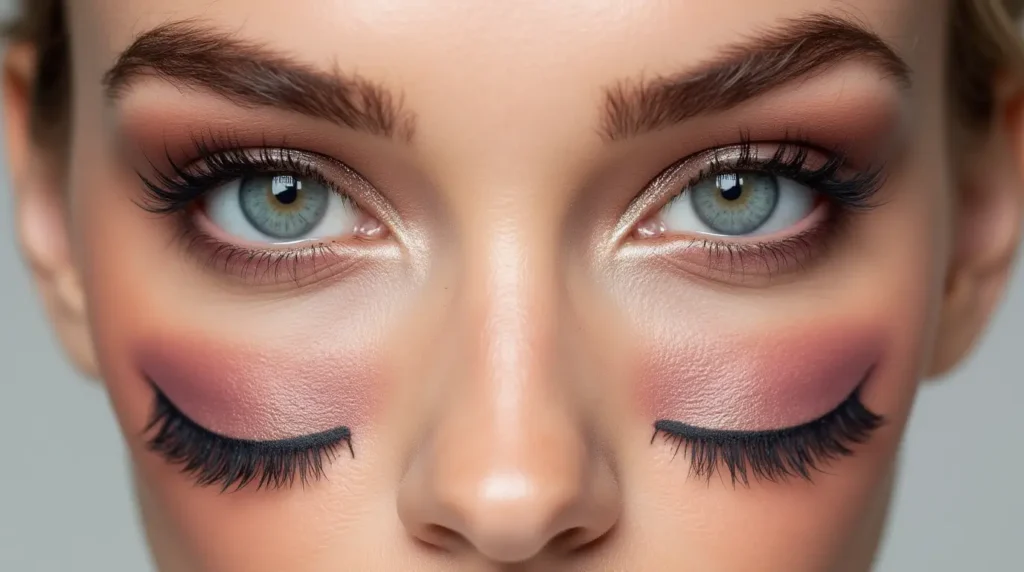
Pro Tips & Makeup Artist Secrets
Application Techniques by Eye Shape
Round Eyes: Emphasize the outer corner with darker shades to elongate the eye.
Almond Eyes: Enhance the natural shape with an extended cat-eye effect.
Hooded Eyes: Focus color above the crease where it will be visible. Use matte shades to recede the hood.
Monolid Eyes: Create dimension with gradients of light to dark, moving vertically on the lid rather than in the crease.
Time-Saving Hacks
- Use cream shadow sticks for one-swipe application when you’re short on time
- Set your brows before doing eyeshadow to avoid cleanup from powder fallout
- For early mornings, pre-plan three go-to looks with specific shades marked in your palette
Tools That Make a Difference
- Sponge-tip applicators: Perfect for packing on shimmer without fallout
- Precision brushes with a pointed end: Essential for detailed inner corner highlighting
- Setting spray: Mist your brush before applying metallic shadows for foiled intensity
Eyeshadow Essentials – Toolkit Table
| Product Type | Recommended Use | Pro Tip |
|---|---|---|
| Eyeshadow Primer | Base for longevity & intensity | Use a concealer if you don’t have one |
| Neutral Palette | Everyday & blendable shades | Mix mattes and shimmers |
| Smudging Brush | For smokey or soft looks | Clean regularly to avoid muddy colors |
| Angled Brush | For liner or cut crease | Dampen for sharper lines |
| Setting Spray | Lock everything in place | Spray after eyes and whole face |
Conclusion
Eyeshadow looks are about creativity, confidence, and personal expression. They’re an opportunity to play with color and texture in a way that enhances your natural beauty or transforms your appearance entirely.
Remember that mastering eyeshadow application takes practice. Even professional makeup artists were beginners once, experimenting and making mistakes along the way. Embrace the learning process, and don’t be afraid to try new techniques or colors.
What’s your go-to eyeshadow look? Share it below!
FAQs
How can I create simple eyeshadow looks for daily wear?
Stick to two-shade combos using a base and a slightly darker crease color. Blend well and skip liner for a natural finish. Neutral palettes with light browns, taupes, or soft pinks are foolproof choices for everyday wear.
What’s the best way to apply eyeshadow for hooded eyes?
Focus color above the natural crease and avoid dark shades on the inner lid. Keep your eyes open during application to ensure you’re placing shadow where it will be visible. Create definition at the lash line rather than on the mobile lid, which may disappear when your eyes are open.
How do I start if I’m new to eyeshadow tutorial videos?
Look for beginner-friendly YouTube channels or use shadow sticks and follow visual guides. Start with creators who explain techniques slowly and clearly, rather than jumping into complex looks. Search specifically for “beginner eyeshadow” or “easy eyeshadow for beginners” to find appropriate content.
Can I use these looks for sensitive eyes?
Yes, choose hypoallergenic, fragrance-free formulas labeled safe for sensitive skin. Mineral-based eyeshadows tend to be gentler and cause less irritation. Cream formulas often contain fewer irritating preservatives than powders. Always do a patch test first and remove makeup thoroughly before bed.
How to put eyeshadow quickly before work?
Use fingers to apply cream eyeshadow or a stick in one shade — 2 minutes max! Choose a neutral shade slightly darker than your skin tone, apply all over the lid, and blend the edges. Add mascara, and you’re good to go with a polished but quick eye look.
💬 What’s your favorite eyeshadow look? Drop it in the comments or tag us on social to share!

